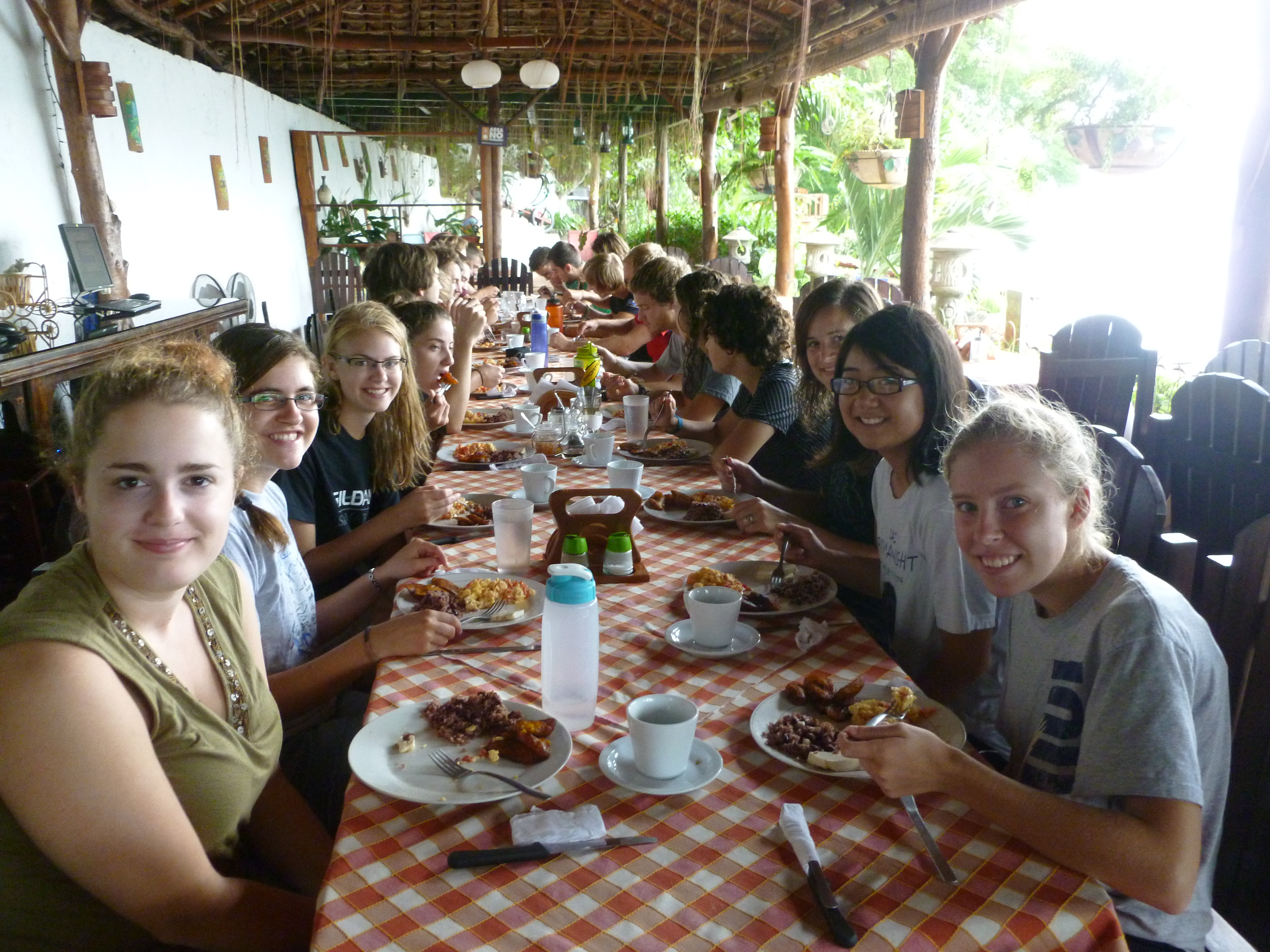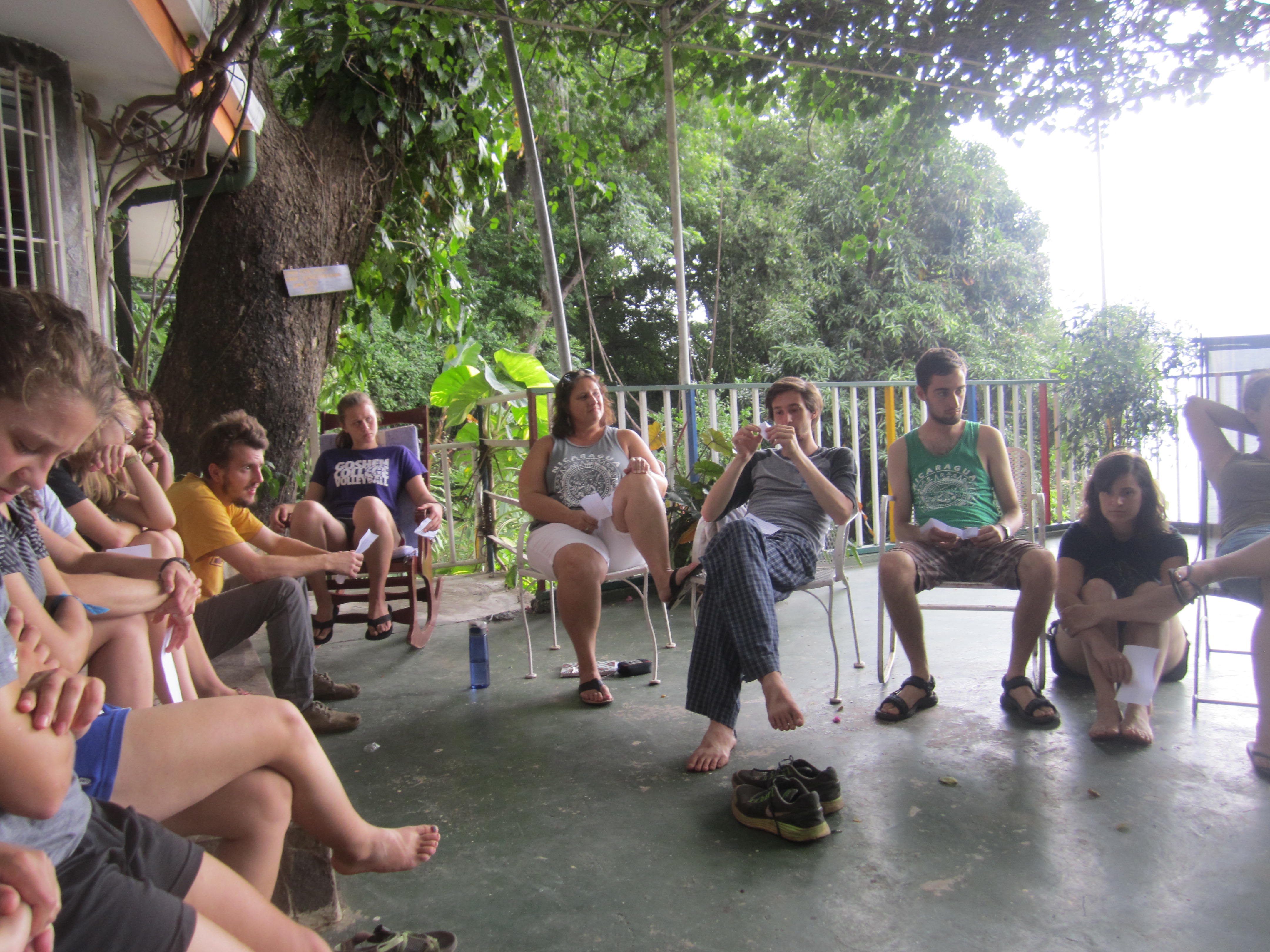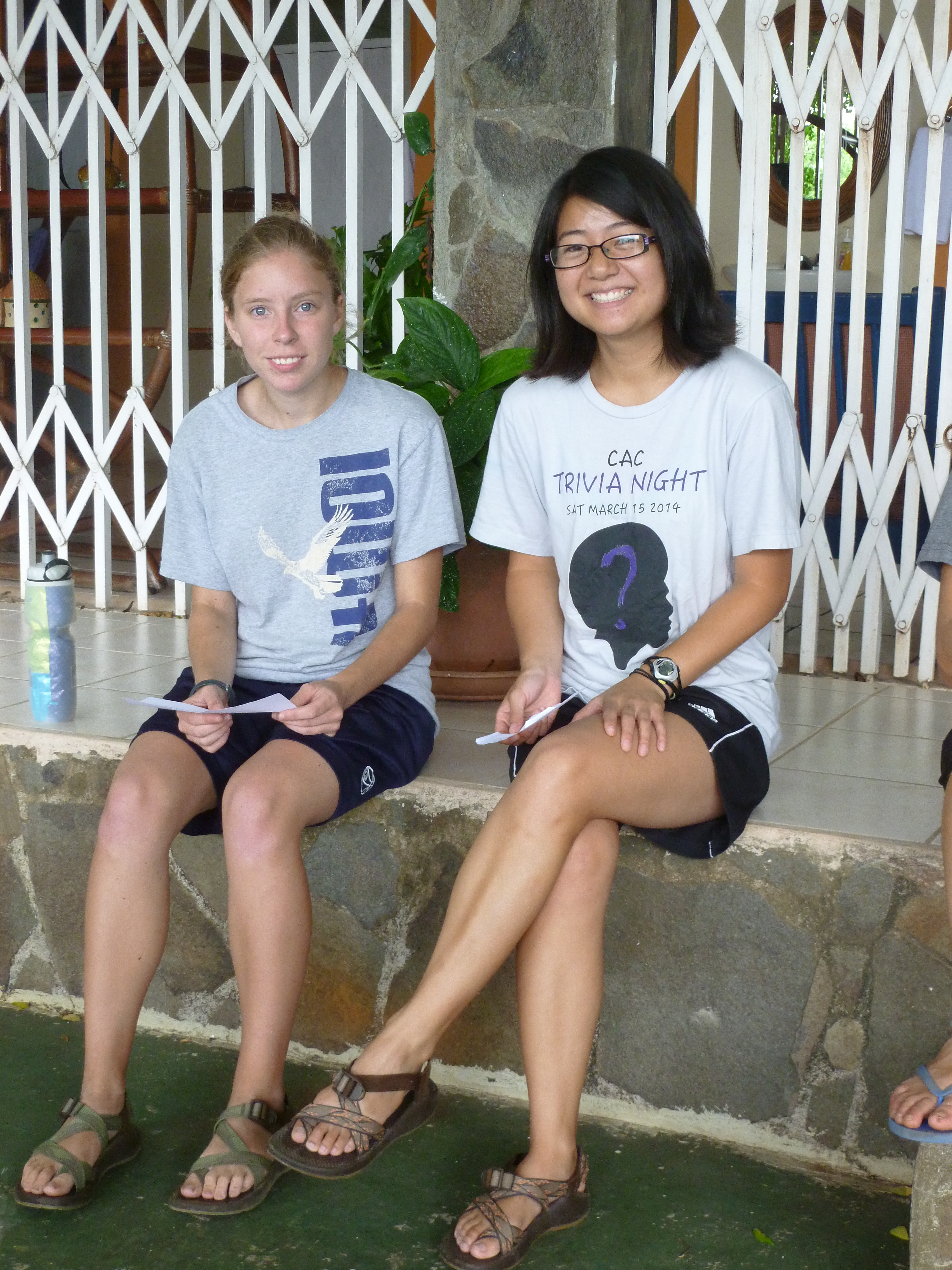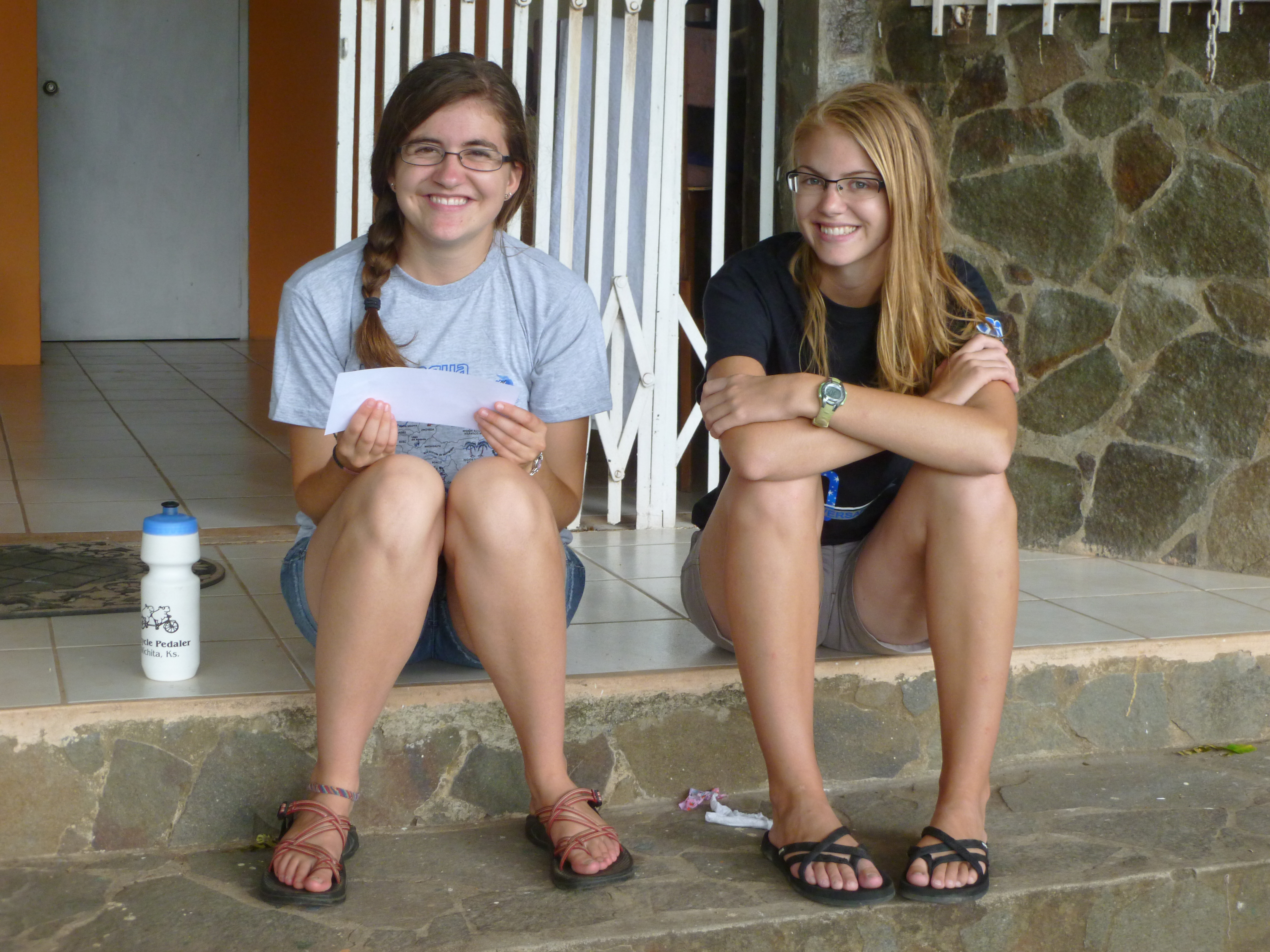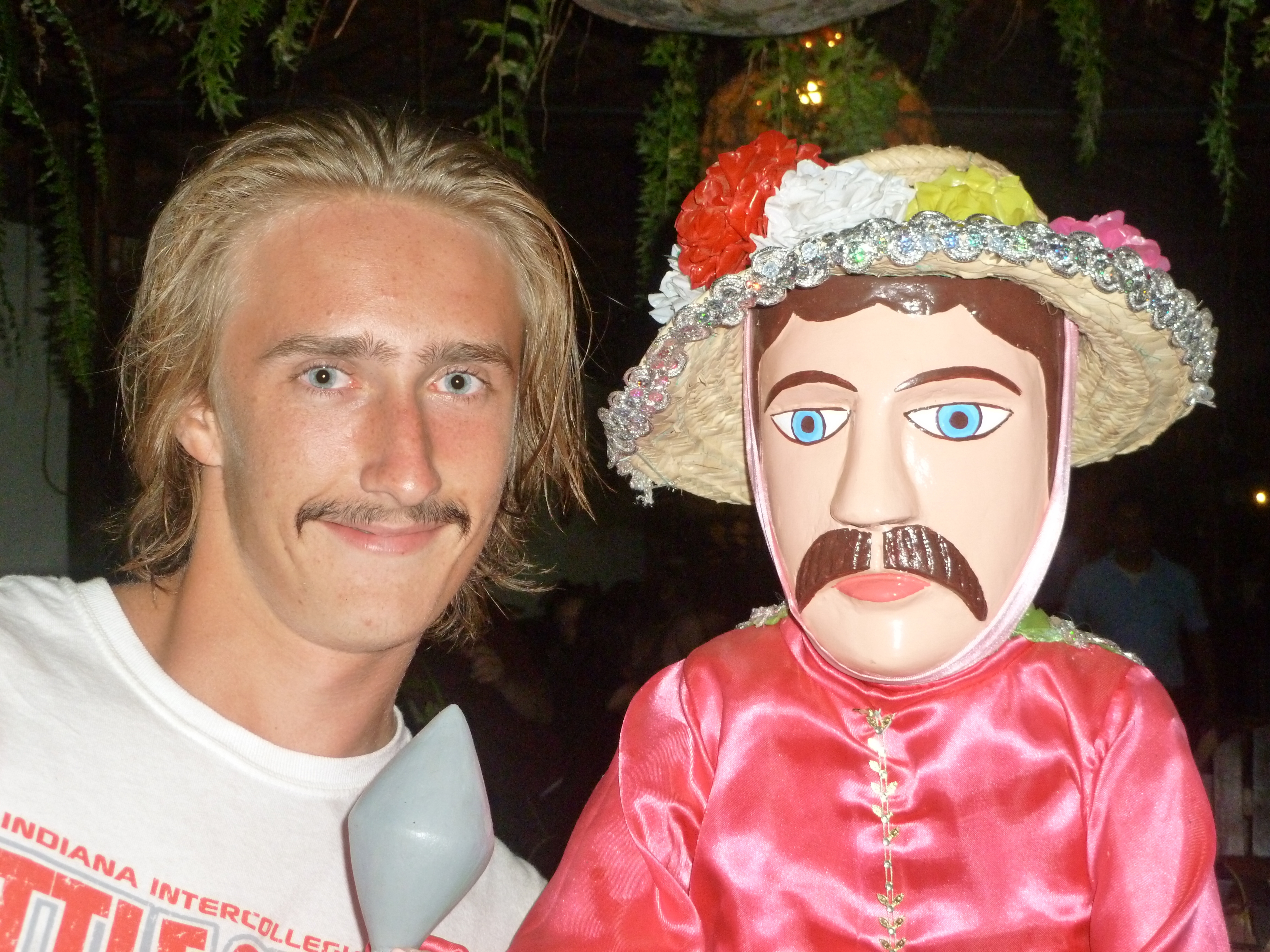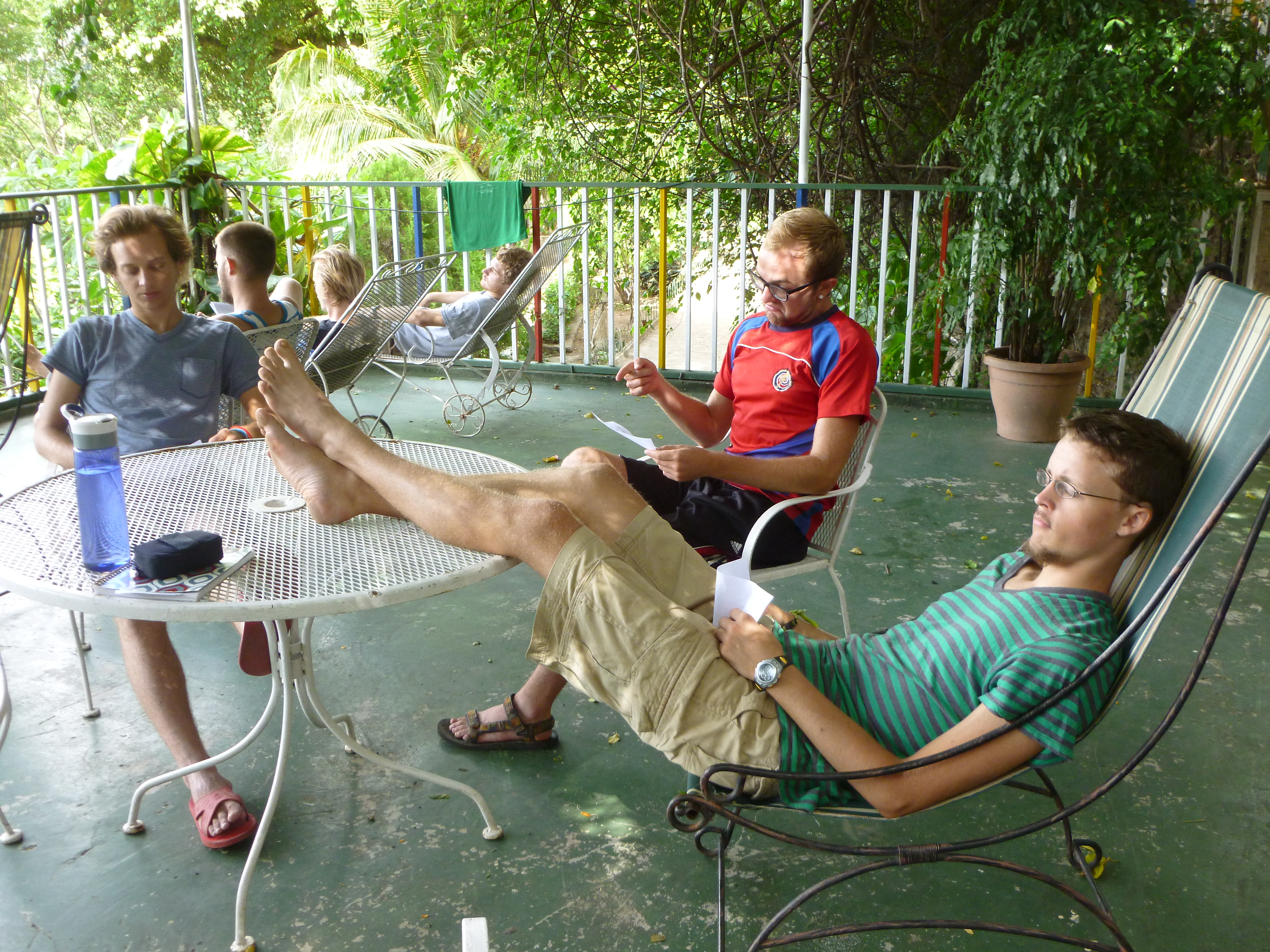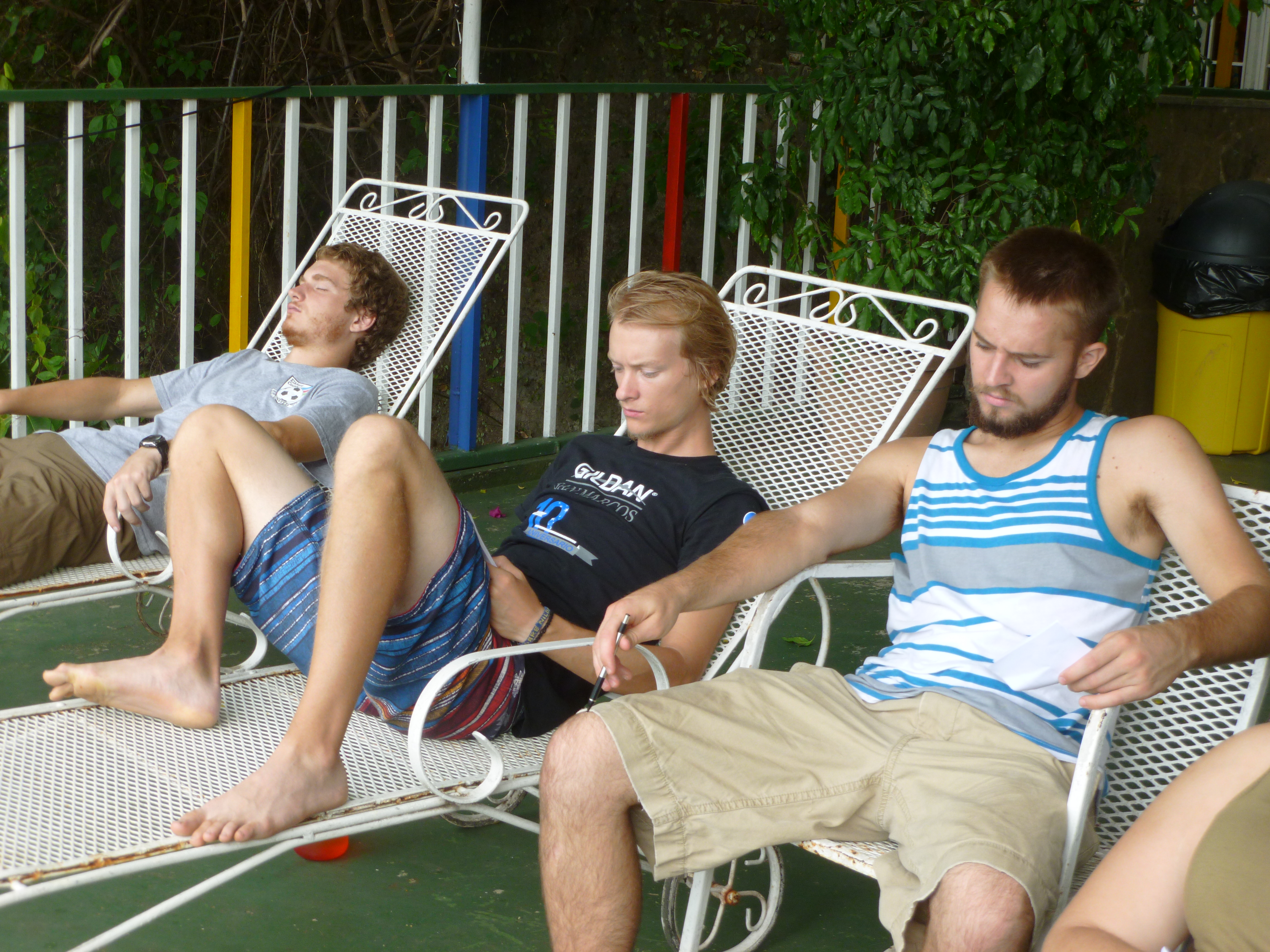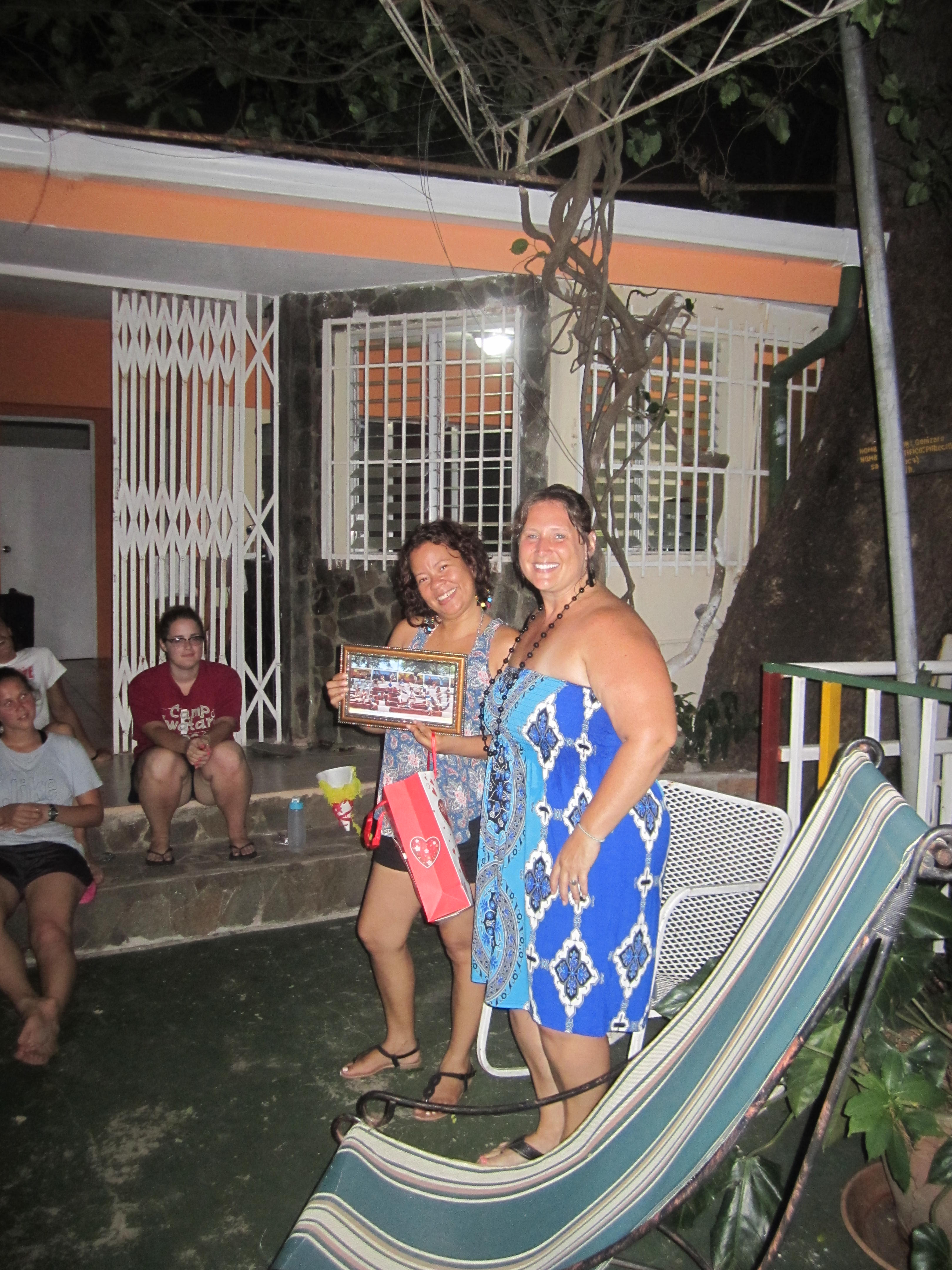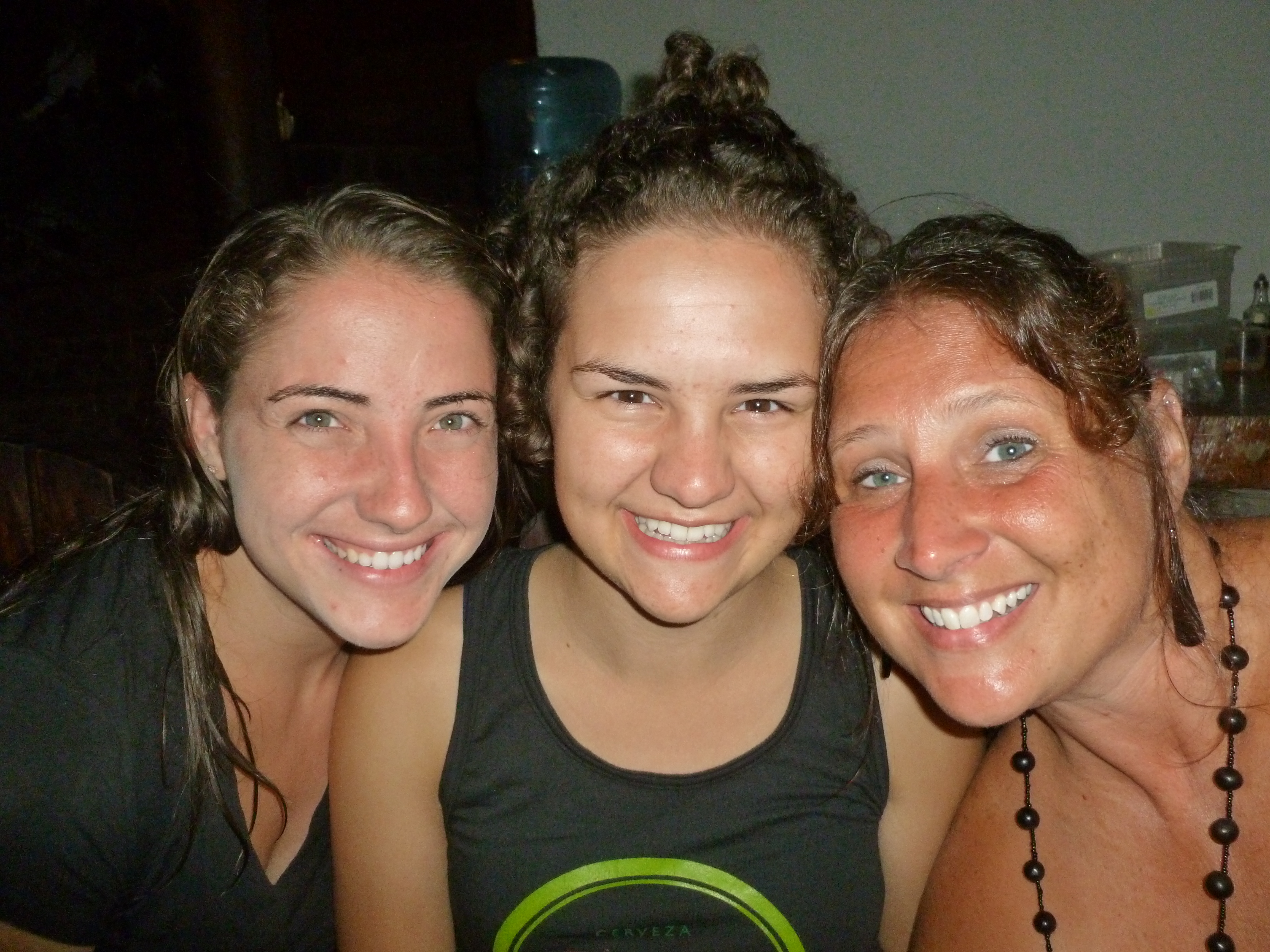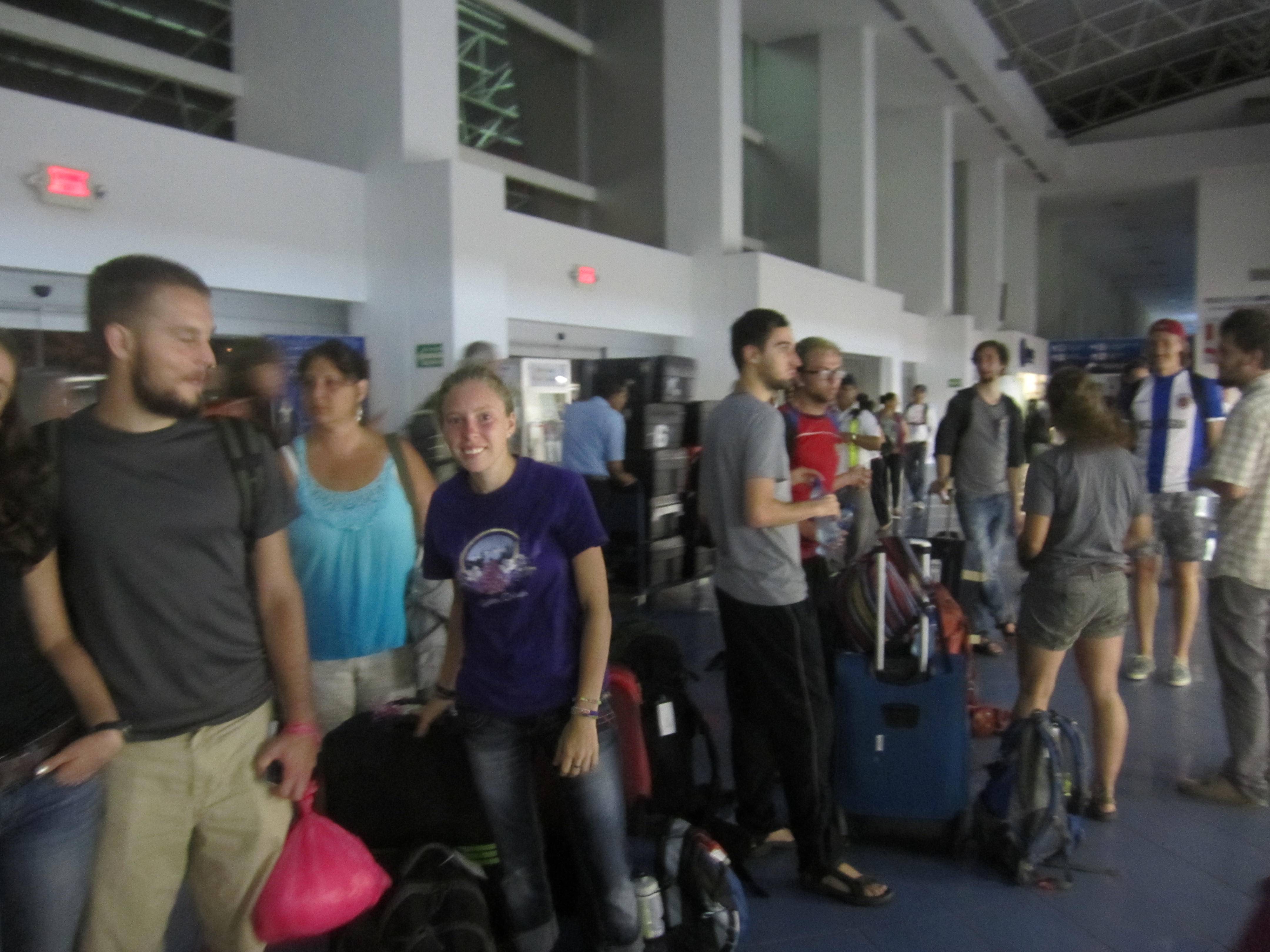Final weekend — and Goodbye to/from Nicaragua!
The final two days together have been a whirlwind of activity, from stories of service to project presentations to decompressing and getting ready to depart.
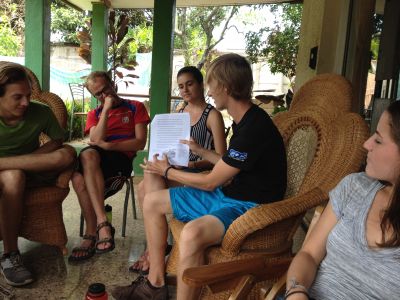
Saturday morning we all gathered one last time at Casa Goshen for presentations of the students’ final projects. Topics included health care, theater, the national police, music of the revolution, earthquake-resistant construction, folk dance, funerals, traditional medicine, howler monkeys and mot-mots, the literacy campaign, organic farming, employment, environmental issues, and more. We were impressed by both the breadth of sources used (both primary and secondary) and the depth of the students’ research.
After another delicious lunch provided by chef Conny, we said goodbye to her, our trusted taxi driver Don José, and Carazo, and headed to the large mercado (outdoor market) in nearby Masaya. Students wandered the artisans’ section looking for last-minute gifts and souvenirs and took in the now-familiar sights, sounds and smells of the market before heading to Laguna de Apoyo for our final two nights in Nicaragua. This natural reserve near the city of Granada was where we spent an afternoon back in May and also where three students had their service assignments, and we all looked forward to plunging into the cool, clean waters of the crater lake again before leaving the country.
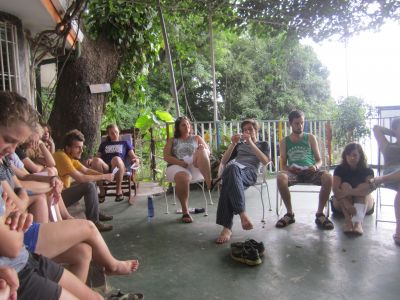
On Sunday morning we took some time to reflect on our experiences, both collective and individual, over the past three months. Among other things, we pondered and responded to questions about what surprised us, what we learned about ourselves, what we might have done differently, what new questions have arisen, and how we see ourselves applying what we have learned once we are back in our home culture. Here are a few memorable quotes:
- I learned to turn off that part of my brain that is always calculating and analyzing.
- I realized how much of one’s success depends on his or her environment and circumstances.
- I had time to just be.
- I learned that I could do things I didn’t think I could do.
- I had to learn to live in the moment, to focus on what I was doing at the time: Now I am getting water… Now I am weeding the field… Now I am washing clothes… And that’s okay.
- I pushed myself to interact even when I didn’t feel like it.
- I am so grateful for the hospitality of my host family and the other Nicaraguans I have met.
- I went from being the ‘master of my domain’ to not really knowing how to do anything.
- I know what it’s like now not to be able to communicate very well; I will definitely be more patient and understanding of those who are learning English back in the states.
- I will put more emphasis on people and interacting with others rather than always having to be busy and ‘productive’ all the time.
- I learned that I don’t have to be in my home to feel at home.
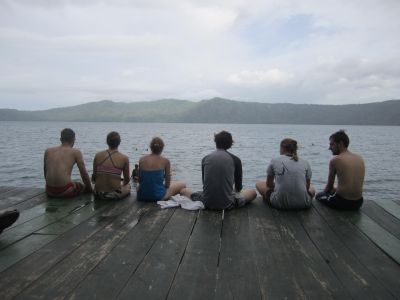
Of course, an experience like SST will take months or even years to fully sink in, and our discussion was just the start of what we hope will be a life-long process of self-evaluation, discovery and transformation. The students recognized that it will be difficult to respond adequately to inevitable questions like, “How was it?” when they return to the states. How do we encapsulate the diverse perspectives we have heard, not to mention the complex political history between United States and Nicaragua? How do we briefly summarize this experience in a way that has integrity, honesty, and substance, even as we are still grappling with contradictions and confusion? (Even we leaders still struggle with this.) Our final reading on culture shock acknowledges that “reentry” into our home culture may be more difficult than we anticipated. It encouraged us to seek out and stay in contact with others who have lived in a different country/culture as one way to help us cope as we look at familiar surroundings with “new eyes.”
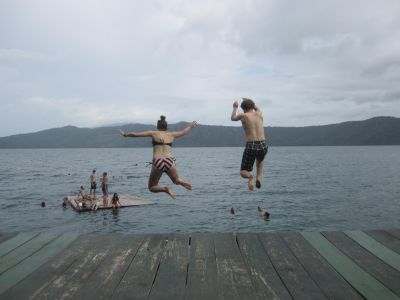 After this last reunión, it was time to relax, repack, and play for the rest of the day. We had our last typical Nicaraguan meal together as the sun set (pollo/res/cerdo asado, tajadas, ensalada, and of course gallo pinto), and then we had a little party to celebrate both the birthdays that occurred during service and the successful completion of our study-service term in Nicaragua. Birthday honorees Jacob, Drea, Anna, and country coordinator Dalena all took swings at the piñata, and after we had our fill of candy, we leaders said a few words of appreciation for each student. Everyone then joined in a hearty thank you to Dalena, who was absolutely indispensable to all of us this summer.
After this last reunión, it was time to relax, repack, and play for the rest of the day. We had our last typical Nicaraguan meal together as the sun set (pollo/res/cerdo asado, tajadas, ensalada, and of course gallo pinto), and then we had a little party to celebrate both the birthdays that occurred during service and the successful completion of our study-service term in Nicaragua. Birthday honorees Jacob, Drea, Anna, and country coordinator Dalena all took swings at the piñata, and after we had our fill of candy, we leaders said a few words of appreciation for each student. Everyone then joined in a hearty thank you to Dalena, who was absolutely indispensable to all of us this summer.
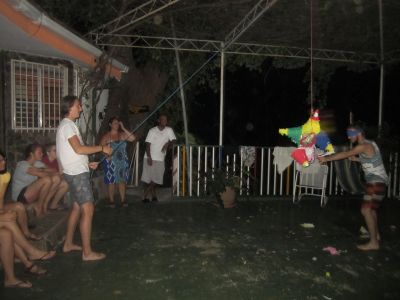
After the party, most of the group took another dip in the lake, and then it was a relatively early (11-ish!) bedtime, so that we could get on the road to the airport by 3:30 a.m. As the students headed through security, they first had to go through the gauntlet of leader/coordinator hugs, and we watched them depart with a mixture of pride, sadness, joy, and yes, even relief (that everyone made it through the semester safely and in good spirits).
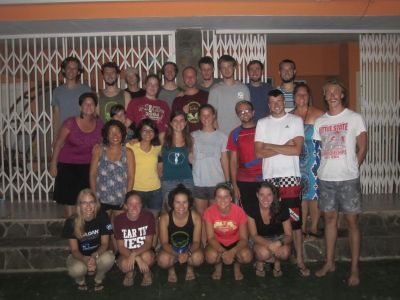
As we close out this blog, we’d much rather say hasta la proxima (’til next time) than adios — both to you, our readers, and to the wonderful people we’ve met and gotten to know here in Nicaragua. Many of us hope to return some day, and perhaps you will be inspired to visit Nicaragua one day as well. Finally, thank you for following along and encouraging these 22 students as they put into practice Goshen College’s core values of global citizenship, passionate learning, and servant leadership. It was an unforgettable experience for all of us!
Lisa and Jen









